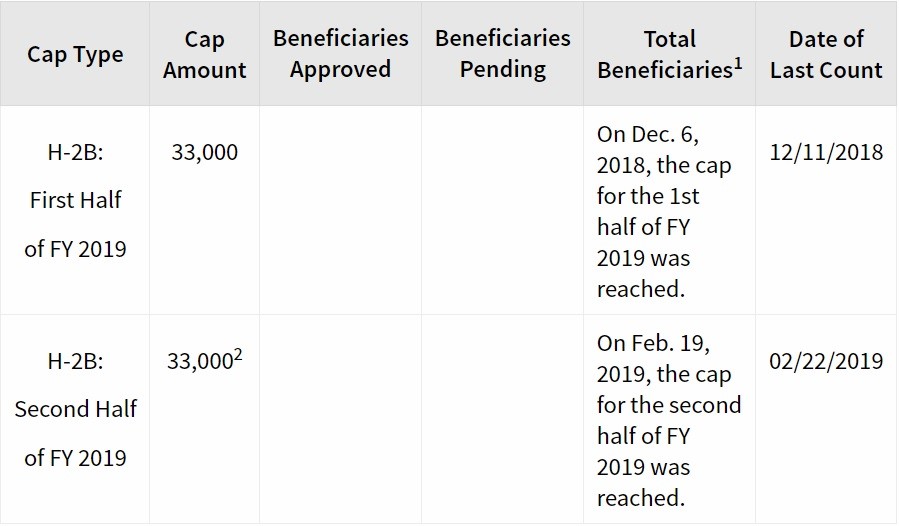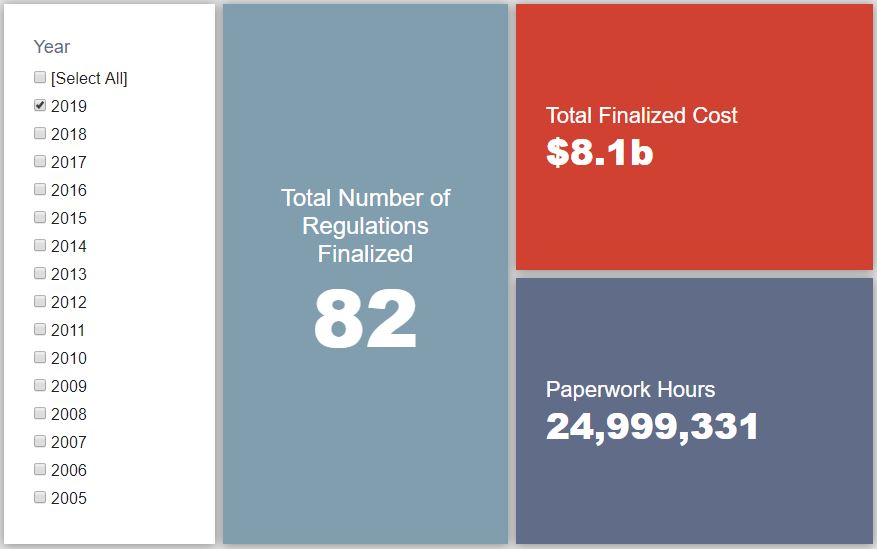Week in Regulation
May 13, 2019
A Modestly Deregulatory Week
Last week marked another ho-hum stretch in the pages of the Federal Register. Nevertheless, there was some movement in the savings column of the regulatory ledger. A couple of rules out of the Department of Health & Human Services (HHS) were the most notable actions. Between both proposed and final rules last week, agencies published $116.3 million in total net cost savings and added 25,596 hours of paperwork.
REGULATORY TOPLINES
- New Proposed Rules: 44
- New Final Rules: 58
- 2019 Total Pages: 20,722
- 2019 Final Rule Costs: $8.1 Billion
- 2019 Proposed Rule Costs: $5.1 Billion
TRACKING THE REGULATORY BUDGET
HHS had the most noteworthy rules of the week. One was on the deregulatory side of the fiscal year (FY) 2019 regulatory budget under Executive Order (EO) 13,771, while the other was deemed a regulatory action. The cost-cutting measure seeks to streamline the “appeals process that Medicare beneficiaries, providers, and suppliers must follow in order to appeal adverse determinations regarding claims for benefits under Medicare.” HHS estimates that this could save affected entities roughly $9.5 million on an annualized basis (or roughly $136 million in present value). The cost-adding measure out of HHS is the Trump Administration’s drug price transparency rule that requires pharmaceutical companies participating in Medicare or Medicaid to include price information in their advertisements. The agency estimates that this could cost such companies $25.6 million over five years.
So far in FY 2019 (which began on October 1, 2018), there have been 46 deregulatory actions (per the rubric created by EO 13,771 and the administration’s subsequent guidance document) against 20 rules that increase costs and fall under the EO’s reach. Combined, these actions yield quantified net costs of roughly $9.2 billion. This total, however, includes the caveat regarding the baseline in the Department of Agriculture’s “National Bioengineered Food Disclosure Standard.” If one considers that rule to be deregulatory, the administration-wide net total is approximately $2.5 billion in net costs. The administration’s cumulative savings goal for FY 2019 is approximately $18 billion.
THIS WEEK’S REGULATORY PICTURE
One can describe “regulatory policy” in many ways: mundane, opaque, monotonous, complex, legalistic. The list goes on. In order to help provide a clearer and more straight-forward view into this world, the American Action Forum (AAF) will seek to provide a brief illustration of a notable regulatory trend we have identified in a given week. This week’s entry: the need for more H-2B visa-eligible workers.
The H-2B visa program is a popular program for employers in non-agricultural industries to fill seasonal employment needs. Current law caps the number of visas available at 66,000 annually – with half allotted semi-annually. The table below, from the U.S. Customs and Immigration Services (USCIS), shows how quickly petitions for these visas fill up.

For employers seeking workers to begin after April 1, 2019, USCIS had received enough petitions to reach its 33,000-visa cap on February 19. This is the earliest the cap had been reached since FY 2009, according to the agency. To help satisfy the needs of additional employers that need these workers, this week the USCIS (along with the Department of Labor) published a temporary rule that takes immediate effect increasing the cap by 30,000 visas. The rule exercises authority granted in the FY 2019 omnibus spending bill signed into law on February 15.
The rule is atypical in that the agencies are bypassing two basic requirements of the Administrative Procedure Act (APA). The first is the notice and comment rulemaking requirement. The second is the minimum 30-day delay before a rule can take effect. The agencies are bypassing these requirements because the APA allows exceptions when agencies can show good cause that doing so is in the public’s interest. In this case, the agencies argue that any delay to accept notice and comment or in the effective date will harm participants in the program by further delaying the availability of needed workers.
The rule is also atypical in its status under the Trump Administration’s regulatory budget. Like last year’s rule, the rule counts as deregulatory because it frees up extra visas and helps employers increase productivity, even though more businesses petitioning for more visas necessarily increases the economic cost of the rule. In this case, the agencies estimate the cost to businesses seeking the extra visas to be about $11.9 million.
TOTAL BURDENS
Since January 1, the federal government has published $13.1 billion in net costs (with $8.1 billion in finalized costs) and 25 million hours of net paperwork burden increases (almost entirely from final rules). Click here for the latest Reg Rodeo findings.












